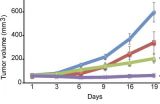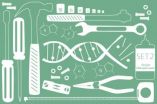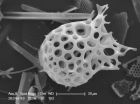(Press-News.org) Huntsville, Ala. – Sequencing the genomes of domesticated citrus revealed a very limited genetic diversity that could threaten the crop's survival prospects, according to an international research team. In a study published in the June issue of Nature Biotechnology, the international consortium of researchers from the United States, France, Italy, Spain and Brazil analyzed and compared the genome sequences of 10 diverse citrus varieties, including sweet and sour orange along with several important mandarin and pummelo cultivars. The findings provide the clearest insight to date of how citrus has been cultivated and point to how modern genomics-guided development could help produce crops that better resist environmental stresses and pests.
The team, led by Fred Gmitter of the University of Florida Citrus Research and Education Center, included the U.S. Department of Energy's Joint Genome Institute (JGI) and the HudsonAlpha Institute for Biotechnology Genome Sequencing Center. To discover how various types of citrus have been cultivated, the team compared the genetic sequences of several species of citrus.
The HudsonAlpha Genome Sequencing Center (GSC), led by Jeremy Schmutz and Jane Grimwood, contributed sequence and assembled the genome of the Clementine variety, creating its first "reference genome" for comparative analysis. The GSC is one of the few centers in the world performing de novo sequencing of plants and specializing in applying genomic techniques to understand how plants function in response to environmental stimuli. Schumtz leads the plant program in the JGI.
"Citrus is a major US crop, and in Florida, the country's major producer, citrus is being killed now by greening and other diseases," said Schmutz. "What we've found is that we're planting very similar trees to what were planted 4,000 years ago. These same genotypes do not provide much diversity to resist diseases, and there is very little wild citrus that can be used to easily add diversity to modern citrus. This study shows how understanding the genomics of these plants can help identify sources of diversity, whether from introducing genes from wild species or selecting for desired traits using genetic techniques."
Citrus is the world's most widely cultivated fruit crop. In the U.S. alone, the citrus crop was valued at more than $3.1 billion in 2013. Originally domesticated in Southeast Asia thousands of years ago before spreading throughout Asia, Europe and the Americas via trade, citrus is now under attack from citrus greening, an insidious emerging infectious disease that is destroying entire orchards. Citrus greening is one of the most serious citrus plant diseases in the world, and once a tree is infected there is no cure.
To help defend citrus against this disease and other threats, researchers worldwide are mobilizing to apply genomic tools and approaches to understand how citrus varieties arose and how they respond to disease and other stresses. By understanding the relationships between various cultivated species with what they describe as "very narrow genetic diversity," researchers hope to enable sequence-directed improvement, which could lead to crops that are more resistant to disease and stresses such as environmental changes.
The consortium found that diverse varieties are derived from two wild citrus species that diverged in Southeast Asia more than five million years ago. The team also found that pummelos indeed are a distinct citrus species, but mandarin oranges are not. Sequences of traditional mandarins like Ponkan and Willowleaf — believed to have grown without contact with other species — as well as known hybrid mandarins, all contain parts of the pummelo sequence, meaning that their genomes are not as distinct as originally believed.
As citrus varieties are reproduced asexually by vegetative propagation, trees producing a specific type of fruit are typically genetically identical. This growing strategy produces a uniform, high-quality fruit, but has the drawback that if one tree is susceptible to disease, they all are. By inferring the past hybridization events that gave rise to these common citrus varieties — either in the wild populations before domestication or in early undocumented human-directed breeding efforts —the team hopes to enable strategies for improving citrus, including resistance to greening and other diseases.
The study highlights how understanding genetics can help introduce (or in this case, restore) diversity to citrus and other crops to aid growth rates and resistance to environmental stresses like disease and drought. It also shows how modern agricultural systems need to adapt to maintain healthy, valuable crops. "Traditionally, agriculture has selected for robust, high yield cultivars and ignored much of the available wild diversity after initial domestication," said Schmutz. "This study shows that you need to continue to introduce genetic diversity into the crop development process." The discovery of a genetically unique Mangshan variety also shows that wild, unrelated versions of citrus may still exist, and could be used to provide more robust, diverse plants in the mix of citrus crops.
INFORMATION:
The HudsonAlpha Institute for Biotechnology is a nonprofit institute dedicated to innovating in the field of genomic technology and sciences across a spectrum of biological problems. Its mission is three-fold: sparking scientific discoveries that can impact human health and well being; fostering biotech entrepreneurship; and encouraging the creation of a genomics-literate workforce and society. The HudsonAlpha biotechnology campus consists of 152 acres within Cummings Research Park, the nation's second largest research park. Designed to be a hothouse of biotech economic development, HudsonAlpha's state-of-the-art facilities co-locate nonprofit scientific researchers with entrepreneurs and educators. These relationships formed on the HudsonAlpha campus encourage collaborations that yield results in medicine and agriculture. Since opening in 2008, HudsonAlpha, under the leadership of Dr. Richard M. Myers, has built a name for itself in genetics and genomics research and biotech education and includes 26 diverse biotech companies on campus.
Sequencing of citrus genomes points to need for more genetic diversity to fight disease
2014-06-09
ELSE PRESS RELEASES FROM THIS DATE:
Combination therapy may help patients with follicular lymphoma
2014-06-09
A new study in The Journal of Experimental Medicine reveals that a high-risk group of patients with follicular lymphoma could benefit from a novel drug combination.
Follicular lymphoma, a B cell lymphoma, is an incurable form of non-Hodgkin lymphoma that is diagnosed each year in 120,000 people worldwide. Follicular lymphoma is characterized by slow and relentless tumor growth with inevitable relapses despite intense chemotherapy. Follicular lymphomas are driven by mutations that activate the BCL2 protein, which prevents cancer cells from dying, but additional genetic ...
No limits to human effects on clouds
2014-06-09
Understanding how clouds affect the climate has been a difficult proposition. What controls the makeup of the low clouds that cool the atmosphere or the high ones that trap heat underneath? How does human activity change patterns of cloud formation? The research of the Weizmann Institute's Prof. Ilan Koren suggests we may be nudging cloud formation in the direction of added area and height. He and his team have analyzed a unique type of cloud formation; their findings, which appeared recently in Science indicate that in pre-industrial times, there was less cloud cover over ...
UNC researchers pinpoint new role for enzyme in DNA repair, kidney cancer
2014-06-09
CHAPEL HILL, N.C. – Twelve years ago, UNC School of Medicine researcher Brian Strahl, PhD, found that a protein called Set2 plays a role in how yeast genes are expressed – specifically how DNA gets transcribed into messenger RNA. Now his lab has found that Set2 is also a major player in DNA repair, a complicated and crucial process that can lead to the development of cancer cells if the repair goes wrong.
"We found that if Set2 is mutated, DNA repair does not properly occur" said Strahl, a professor of biochemistry and biophysics. "One consequence could be that if you ...
Did violence shape our faces?
2014-06-09
(Salt Lake City) —What contributed to the evolution of faces in the ape-like ancestors of humans?
The prehistoric version of a bar fight —over women, resources and other slug-worthy disagreements, new research from the University of Utah scheduled for publication in the journal Biological Reviews on June 9 suggests.
University of Utah biologist David Carrier and Michael H. Morgan, a University of Utah physician, contend that human faces —especially those of our australopith ancestors — evolved to minimize injury from punches to the face during fights between males. ...
Iron supplements improve anemia, quality of life for women with heavy periods
2014-06-09
A study by researchers from Finland found that diagnosis and treatment of anemia is important to improve quality of life among women with heavy periods. Findings published in Acta Obstetricia et Gynecologica Scandinavica, a journal of the Nordic Federation of Societies of Obstetrics and Gynecology, suggest clinicians screen for anemia and recommend iron supplementation to women with heavy menstrual bleeding (menorrhagia).
One of the common causes of iron deficiency and anemia is heavy bleeding during menstration. Over time monthly mentrual iron loss without adequate ...
Most breast cancer patients may not be getting enough exercise
2014-06-09
Physical activity after breast cancer diagnosis has been linked with prolonged survival and improved quality of life, but most participants in a large breast cancer study did not meet national physical activity guidelines after they were diagnosed. Moreover, African-American women were less likely to meet the guidelines than white women. Published early online in CANCER, a peer-reviewed journal of the American Cancer Society, the findings indicate that efforts to promote physical activity in breast cancer patients may need to be significantly enhanced.
The US Department ...
Longer telomeres linked to risk of brain cancer
2014-06-08
New genomic research led by UC San Francisco (UCSF) scientists reveals that two common gene variants that lead to longer telomeres, the caps on chromosome ends thought by many scientists to confer health by protecting cells from aging, also significantly increase the risk of developing the deadly brain cancers known as gliomas.
The genetic variants, in two telomere-related genes known as TERT and TERC, are respectively carried by 51 percent and 72 percent of the general population. Because it is somewhat unusual for such risk-conferring variants to be carried by a majority ...
New molecule enables quick drug monitoring
2014-06-08
Monitoring the drug concentration in patients is critical for effective treatment, especially in cases of cancer, heart disease, epilepsy and immunosuppression after organ transplants. However, current methods are expensive, time-consuming, and require dedicated personnel and infrastructure away from the patient. Publishing in Nature Chemical Biology, scientists at EPFL introduce novel light-emitting sensor proteins that can quickly and simply show how much drug is in a patient's bloodstream by changing the color of their light. The method is so simple that it could be ...
Retracing early cultivation steps: Lessons from comparing citrus genomes
2014-06-08
Citrus is the world's most widely cultivated fruit crop. In the U.S. alone, the citrus crop was valued at over $3.1 billion in 2013. Originally domesticated in Southeast Asia thousands of years ago before spreading throughout Asia, Europe, and the Americas via trade, citrus is now under attack from citrus greening, an insidious emerging infectious disease that is destroying entire orchards. To help defend citrus against this disease and other threats, researchers worldwide are mobilizing to apply genomic tools and approaches to understand how citrus varieties arose and ...
Warming climates intensify greenhouse gas given out by oceans
2014-06-08
Rising global temperatures could increase the amount of carbon dioxide naturally released by the world's oceans, fuelling further climate change, a study suggests.
Fresh insight into how the oceans can affect CO2 levels in the atmosphere shows that rising temperatures can indirectly increase the amount of the greenhouse gas emitted by the oceans.
Scientists studied a 26,000-year-old sediment core taken from the Gulf of California to find out how the ocean's ability to take up atmospheric CO2 has changed over time.
They tracked the abundance of the key elements silicon ...





